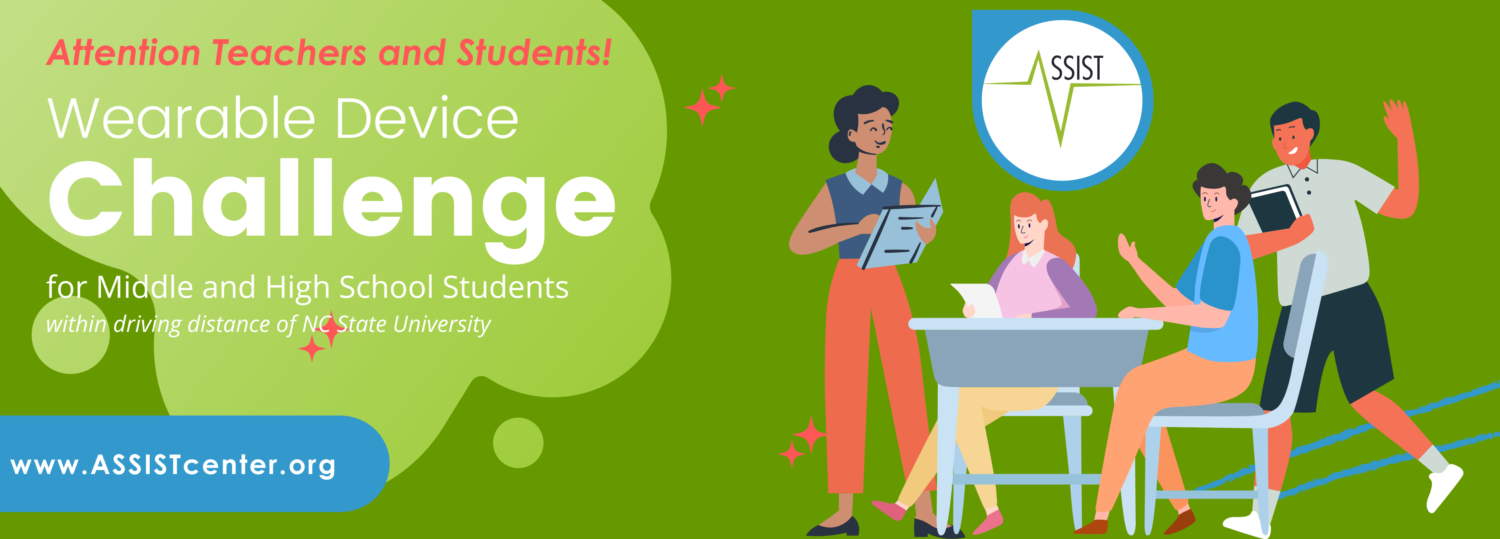
Wearable Device Challenge
The Wearable Device Challenge has grown in participation from 8 students in 2015 to almost 100 students in 2025. Since 2016, the event has expanded to include Middle and High School divisions.
The Wearable Device Challenge integrates the One Health Initiative concepts and the Grand Challenges of Engineering to create a competition where students will be tasked with designing a wearable device to monitor the health of a human or animal based on environmental factors and/or disease transmission.
On this page, please find more information regarding the Wearable Device Challenge:
Competition Overview
- Create a wearable device for a human or an animal
- Make a poster detailing the design process of your product
- Create an ad campaign for your product
- Keep an engineering design journal
- Register to compete & submit materials
- and… COMPETE!
Eligibility
The Wearable Device Challenge has two divisions – Middle School and High School.
The Challenge is team-based and each team can have up to 6 student members. Each teacher can enter 1 or 2 teams. If there is more than one participating teacher at the same school, they may each bring one or two teams to the final challenge on April 9, 2025 at NC State University.
Every teacher must register and indicate the number of teams they plan to bring to the Challenge in late winter of 2025.
Teachers must register all students attending the challenge and submit a parent/guardian-signed copy of the NCSU General Participation Agreement FOR EVERY PARTICIPANT to cfreback@ncsu.edu.
Guidelines
The teams from participating schools will upload their designs and all supporting materials via Google Drive for preliminary judging. Judges will consist of a team of graduate research assistants, professors from NC State University, and industry personnel. The competition is organized and sponsored by the ASSIST Center at NC State University. Students must create a working prototype (high school) or model (middle school) of their device, a poster showing the engineering design process used to create their device, and an ad campaign informing the public of their device.
Students will use the engineering design process to create a wearable device that monitors health and is aligned with the One Health Initiative. Students will design their wearable device students using platforms such as Arduino Unos, Lilypads, or TI Sensortag. Students must be able to articulate how future iterations of their design can be self-powered. High school students will be tasked with designing a working prototype while middle students will be required to design a 3D model (bonus points will be given to middle school teams that have a working prototype).
Judging Rubric
Device
High School Students:
You are tasked with creating a working prototype of a device that will help monitor or prevent a health concern. Your group can use platforms such as Arduino Uno, LilyPad, Raspberry Pi, or another device/ platform of your choosing to create your prototype. Your group may choose if they want to design the device for a human or for an animal. Whatever you choose though, the data your device collects must be applicable to both humans and animals (for example a group could create a device for a search and rescue dog that monitors hydration, temperature, location, etc., but this same type of device, with a few modifications, could be used to help monitor the health of the search and rescue human workers as well).
*Note: You only need to make one device. Your team must also be able to explain how future iterations of your device can be powered without a battery.
Middle School Students:
Your team’s device does not need to be a working prototype, simply a model, though bonus points will be rewarded for a working prototype. Your team must also be able to explain how future iterations of your device can be powered without a battery.
When designing your device consider the following:
- What will this device monitor/measure and how?
- Who is this device designed for?
- Why is this device needed?
- How can this device be worn?
- Is it comfortable for the user?
- Where should the sensors be placed to most accurately monitor data?
Poster
Each team will be responsible to creating a poster documenting the engineering design process used to create their device. It is highly suggested that the teams keep an engineering journal throughout the process of their design to document the steps of the engineering design process (this will be very useful in the creation of your poster).
There is no specific template for your poster. However, the examples below can provide some guidance for the layout, arrangement, and overall content of your poster.
Please create your poster in PowerPoint or Google Slides and have the size set to 36″ x 48.”
Ad Campaign
The ad campaign can be in any form the team chooses (commercial, radio ad, song, flyer, website, etc.), but it must be geared towards the target population for your device. (For example, if the device is made to monitor symptoms of Ebola in a small village in Sierra Leone, it would not make sense for your ad campaign to be a website.) The ad campaign should provide information on why the device is needed and who will benefit from its use. The ad campaign should explain how to use the device and what the device does.
